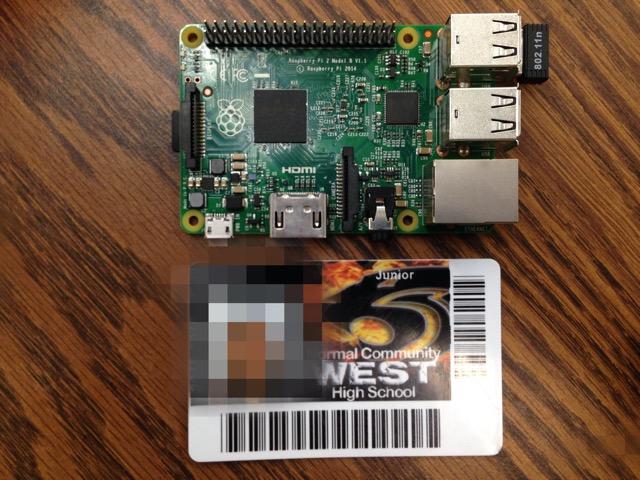West students get a taste of Raspberry Pi
Raspberry Pi size compared to a school id.
May 4, 2016
The Normal West tech department is great. Though most students not taking tech classes don’t get to see it, the tech department is home to a multitude of computers, cameras, a 3D printer, and now has a number of Raspberry Pi’s.
In 2012 a series of credit card sized single-board computers called Raspberry Pi was developed in the United Kingdom. The current Raspberry Pi models available include, the Pi 2 Model B, the Pi 3 Model B, the Pi Zero, and the Pi 1 Model B+ and A+.
Created by Eben Upton, Rob Mullins, Jack Lang and Alan Mycroft based at the University of Cambridge’s Computer Laboratory, the group was concerned with the decline in numbers and skill levels in the people applying to read computer science. With this concern they set out to make a tiny and affordable computer for kids because at the time many wanted to go into computers, but lacked experience.
All models of Raspberry Pi’s feature a Broadcom system on a chip (SOC) which include an ARM compatible CPU and an on chip graphics processing unit (GPU). Most boards have between one and four USB slots, HDMI and composite video output, and a 3.5 mm phono jack for audio. With all these features it makes the pi able to keep up with most full size computers and laptops.
All models of the Raspberry Pi computer allows the user to experience programming, open source software, and is a cheap way to customize your own pc. Raspberry Pi projects don’t just stop with computers either. You can make home automation systems, entertainment centers, arcade machines, robots, and many more.
The Normal West tech department is actually home to a number of Raspberry Pi models. These are used in principles of engineering class and tech club. Junior Connor Turner stated, “We are using them (Raspberry Pi’s) in my P.o.E class with Mr. Higby and we were basically given no rules and we can make whatever we want. My group is making a camera with motion sensors and facial recognition and it’s actually fairly difficult because there is no direction. My group has learned some coding in Python and have done a lot of hands on building. For what little Raspberry Pi’s cost, I think everyone should pick one up just to learn some new computer skills.”
Sophomore Efren Godinez stated, “We are starting to use these in tech club and I was real intimidated at first, but then I did some reasearch. Man, you can make some crazy stuff with that little thing. People probably overlook it, but it’s impressive.”
With the computer world always evolving, people are encouraged to have some experience with them. Raspberry Pi is $35 worth of experience that will help later in the future while also building something fun and useful.






